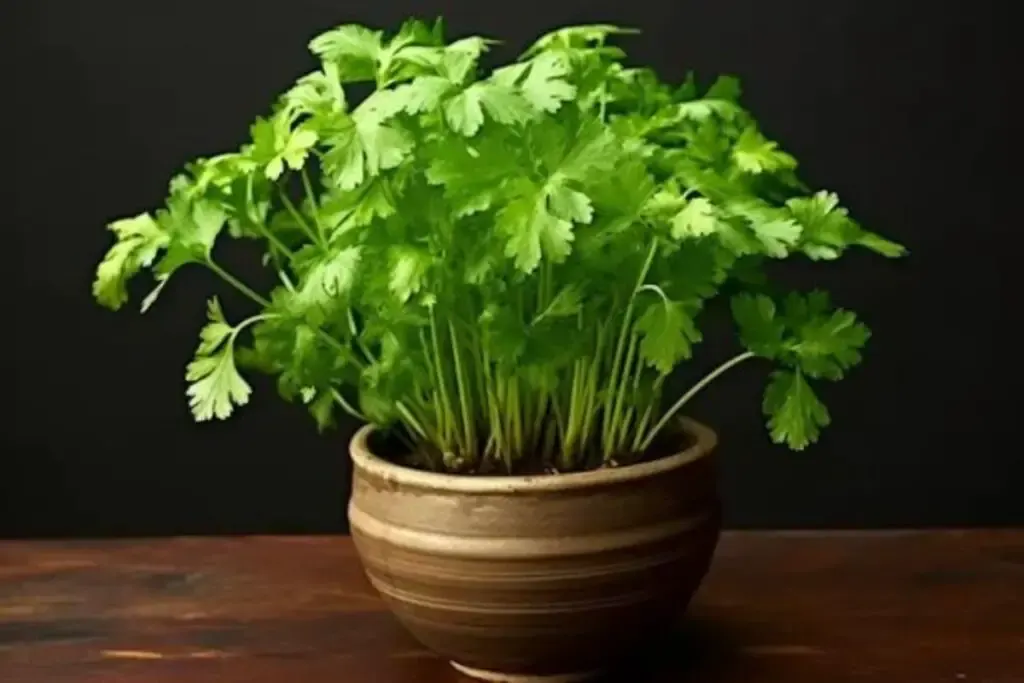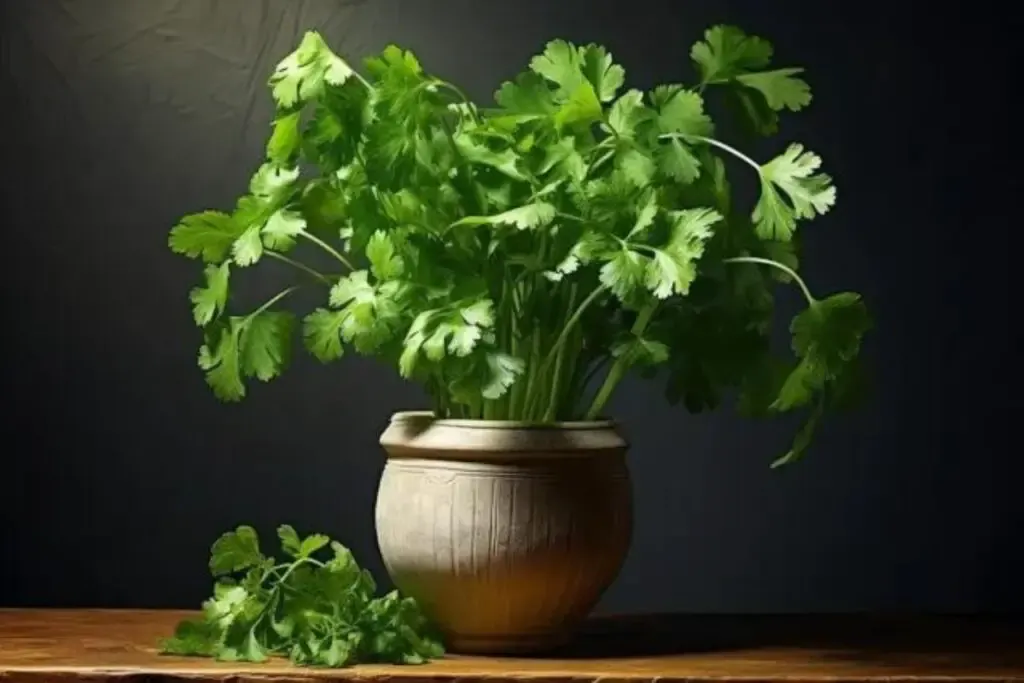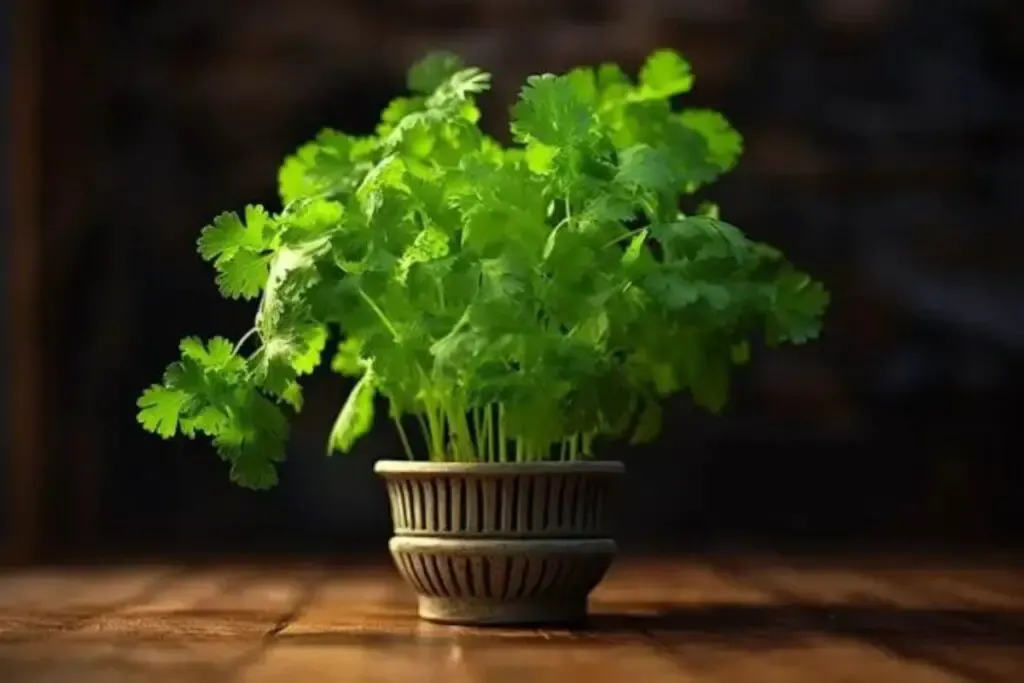Growing cilantro (also known as coriander) in pots is a wonderful way to enjoy fresh herbs without needing a full garden space. As an aromatic herb that’s commonly used in a variety of cuisines around the world, cilantro is not only delicious but also packed with nutrients.
Whether you’re garnishing your favorite dishes or making a fresh batch of salsa, having cilantro on your windowsill or balcony can add a burst of flavor and color to your culinary creations.
As an expert gardening blogger, I’ll walk you through everything you need to know to grow cilantro in pots just like a pro. So, grab your gardening gloves, and let’s dig in!
Does Cilantro Grow Well in Pots?
Absolutely! Cilantro is one of those versatile herbs that adapt well to pot life. In fact, growing cilantro in pots can sometimes be even easier than cultivating it in the garden.
This is due to the control you have over the growing conditions: you can move the pots to take advantage of the best light, keep an eye on moisture levels, and manage pests more easily.
One of the keys to success with potted cilantro is choosing the right container. Make sure it’s deep enough to accommodate the long taproot, typically at least 8 to 10 inches. The pot should also have good drainage holes to prevent waterlogging, which cilantro roots despise.
Another tip is to keep the pots in a spot that gets morning sunlight and afternoon shade, as cilantro favors cooler temperatures and can bolt (go to seed) if it gets too hot.
Now, let’s talk about the varieties that thrive in containers.
Best Cilantro Varieties for Pots
Not all cilantro varieties are created equal, especially when it comes to pot growing. Some are more suited to container life due to their size, growth habits, or bolt resistance.
Here are three varieties that I’ve found to be particularly well-suited for growing in pots.
1. ‘Calypso’ Cilantro

‘Calypso’ is the go-to variety for many potted herb gardeners. It’s a slow-bolting variety, which means it takes longer to produce flowers and seeds.
This is ideal for cilantro lovers because it gives you more time to harvest the leaves. ‘Calypso’ is also known for its uniform growth and high leaf yield. In my personal experience, it maintains a compact shape that’s perfect for windowsills and small outdoor spaces.
2. ‘Santo’ Cilantro

Another great choice is ‘Santo’ cilantro. This variety is a bit of a legend among cilantro varieties due to its bolt resistance. If you live in an area with sudden temperature changes, ‘Santo’ can be a real lifesaver.
It’s a bit taller than ‘Calypso’, but still manageable in a pot. It has a robust flavor that stands out in cooked dishes and fresh salsas alike.
3. ‘Leisure’ Cilantro

The ‘Leisure’ variety is aptly named, as it seems to take its time before bolting, allowing for a leisurely harvest. It’s perfect for those who enjoy frequent snipping of fresh cilantro for their cooking. Its lush, full leaves are highly aromatic and are just what you need to elevate your homemade guacamole or stir-fries.
Each of these varieties brings something special to the table (quite literally), so you can choose based on your cooking needs and climate conditions.
I find rotating between these types keeps my kitchen supplied with fresh cilantro throughout the growing season.
How to Grow and Care For Cilantro in Pots
Growing cilantro in pots is not just rewarding; it’s a journey of aromatic discovery that enhances your cooking and green thumb skills.
Here’s how to ensure your potted cilantro thrives, from the planting stage right through to ongoing care.
Planting
When planting cilantro, you have two options: start from seeds or purchase young plants. I’ve always been partial to planting seeds directly into the pots because cilantro has a taproot system which can be disturbed by transplanting. Plus, watching those first green shoots emerge is nothing short of magical.
Sow the seeds about 1/4 inch deep, and space them a couple of inches apart. If you’re like me and prefer a continuous supply, practice succession planting—sowing new seeds every few weeks. This way, as one batch starts to decline, another is coming into its prime.
Pot Size
The pot size is crucial for growing cilantro successfully. Choose a pot that’s at least 8 to 10 inches deep to accommodate the long taproot, and similarly wide to allow room for multiple plants.
If you’re short on space, you can go with a narrower pot and grow fewer plants. Remember, the key is depth for that root system to thrive.
Light
Cilantro loves the sun, but it doesn’t appreciate the heat, especially in the afternoon. Position your pots where they’ll receive around 6 hours of morning sunlight, followed by partial shade in the afternoon.
If you’re growing indoors, a sunny windowsill that avoids the harsh afternoon sun is ideal.
Soil
A well-draining potting mix is essential for cilantro. I like to mix in a bit of compost for added nutrients and to improve moisture retention.
Ensure the potting mix is light and fluffy—cilantro roots are delicate and need to breathe.
Water
Keeping the soil consistently moist but not soggy is the balance we’re aiming for with cilantro. Water when the top inch of soil feels dry to the touch.
Be vigilant during hot spells, as pots can dry out quickly. I’ve found that a regular, even watering schedule results in the happiest plants.
Temperature and Humidity
Cilantro fares best in cooler temperatures, ideally between 50-85°F (10-29°C). High humidity can lead to fungal problems, so ensure good air circulation if you’re growing indoors or in a humid climate.
If the temperature spikes, don’t panic—move your pots to a cooler, shaded area to protect them from bolting.
Fertilizer
Cilantro isn’t a heavy feeder, but it does appreciate a boost now and then. I recommend using a half-strength liquid fertilizer every four to six weeks, or a slow-release granular fertilizer at the time of planting.
Be careful not to over-fertilize, as this can encourage more foliage growth at the expense of flavor.
Pruning Potted Cilantro
Pruning cilantro may seem counterintuitive; after all, the more leaves, the more to harvest, right? However, proper pruning encourages fuller growth and can delay the plant’s quick journey to flowering (bolting), which ends its leaf-producing stage.
To prune cilantro, I regularly pinch off the top growth, which not only gives me fresh herbs for my cooking but also stimulates the plant to become bushier. Always use clean scissors or your fingertips to avoid damaging the tender stems.
Don’t be shy about harvesting. Cilantro grows back quickly, and frequent trimming helps maintain an optimal shape and size for your potted plant.
Overwintering
Cilantro in pots can be overwintered, but it requires a bit of planning. If you live in a climate with mild winters, your cilantro may survive outdoors with some protection, like mulch or a frost cloth. But in colder zones, you’ll need to bring the pots indoors.
Before the first frost, move your cilantro pots to a sunny spot inside your home, ideally in front of a south-facing window. If sunlight is scarce, a grow light can fill in quite nicely. Reduce watering slightly in winter, as your cilantro’s growth will slow down.
Remember, cilantro is an annual, so its lifespan is limited. That said, you can extend your harvest into the winter months, or even start fresh with indoor sowing. Some gardeners find that plants grown exclusively indoors during the winter are more tender and mild in flavor.
Whether you’re pruning for lush growth or overwintering to extend your cilantro’s life, these steps are all about maximizing your yield and enjoyment of this versatile herb.

